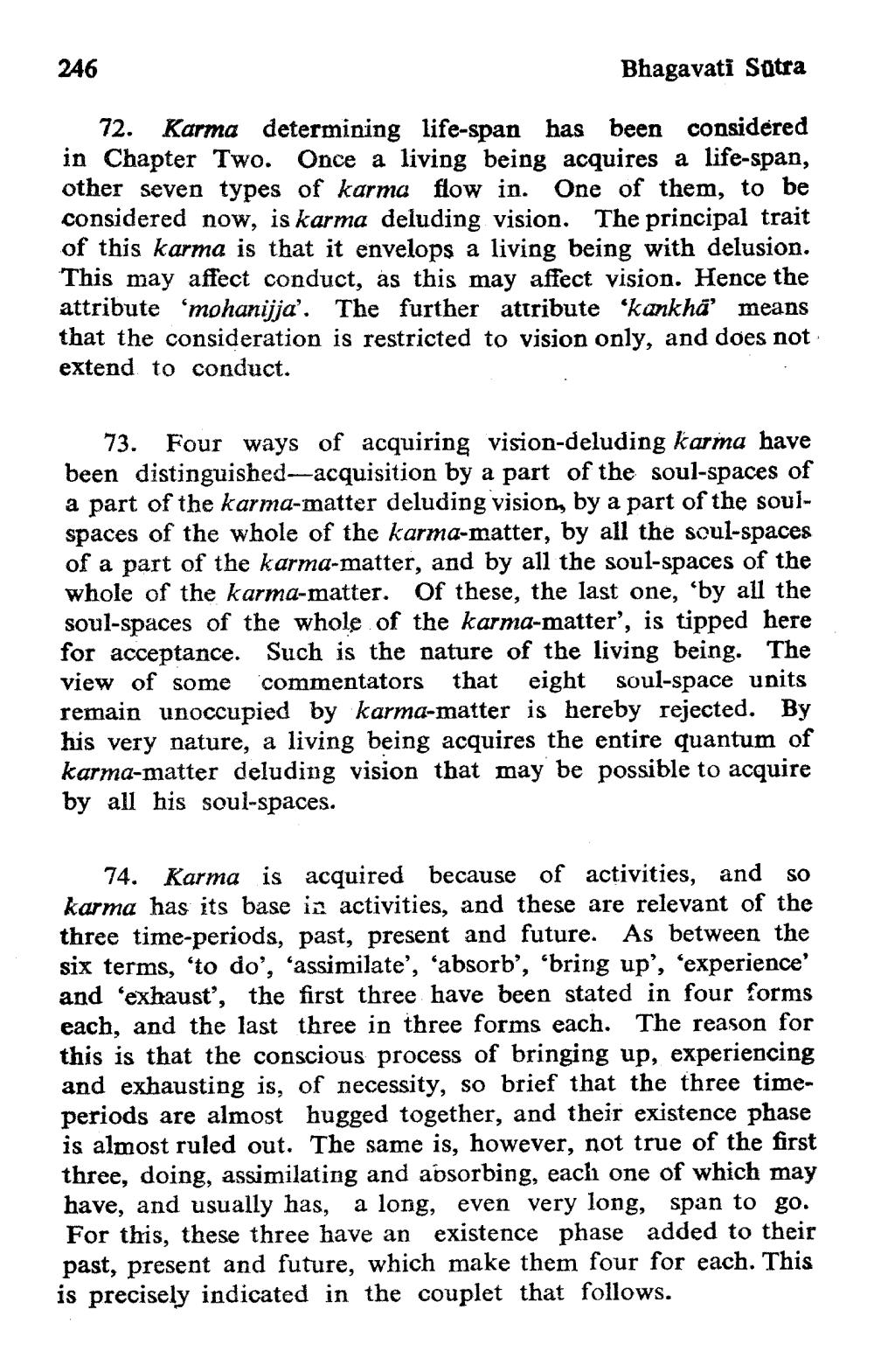________________
246
Bhagavati Sotra
72. Karma determining life-span has been considered in Chapter Two. Once a living being acquires a life-span, other seven types of karma flow in. One of them, to be considered now, is karma deluding vision. The principal trait of this karma is that it envelops a living being with delusion. This may affect conduct, as this may affect vision. Hence the attribute 'mohanijja'. The further attribute 'kankhä' means that the consideration is restricted to vision only, and does not extend to conduct.
73. Four ways of acquiring vision-deluding karma have been distinguished-acquisition by a part of the soul-spaces of a part of the karma-matter deluding vision, by a part of the soulspaces of the whole of the karma-matter, by all the soul-spaces of a part of the karma-matter, and by all the soul-spaces of the whole of the karma-matter. Of these, the last one, by all the soul-spaces of the whole of the karma-matter', is tipped here for acceptance. Such is the nature of the living being. The view of some commentators that eight soul-space units remain unoccupied by karma-matter is hereby rejected. By his very nature, a living being acquires the entire quantum of karma-matter deluding vision that may be possible to acquire by all his soul-spaces.
74. Karma is acquired because of activities, and so karma has its base ic activities, and these are relevant of the three time-periods, past, present and future. As between the six terms, 'to do', 'assimilate', 'absorb', 'bring up', 'experience' and 'exhaust, the first three have been stated in four forms each, and the last three in three forms each. The reason for this is that the conscious process of bringing up, experiencing and exhausting is, of necessity, so brief that the three timeperiods are almost hugged together, and their existence phase is almost ruled out. The same is, however, not true of the first three, doing, assimilating and absorbing, each one of which may have, and usually has, a long, even very long, span to go. For this, these three have an existence phase added to their past, present and future, which make them four for each. This is precisely indicated in the couplet that follows.




